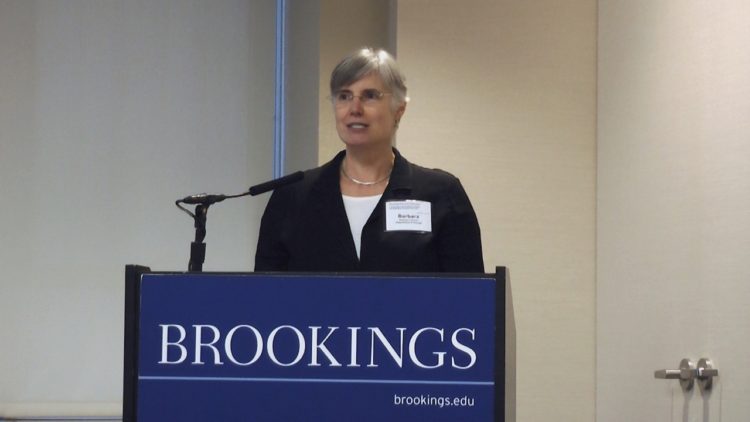At a recent Master Class for Brookings Executive Education’s MS-Leadership candidates, Barbara Fichman of the Energy Information Administration shared a real-world example where BEE coursework helped her team respond to a political firestorm.
In 2011, an agency’s flagship publication sparked controversy between The White House, congressional leaders, the press, and other federal agencies. Statistical data pulled from the publication was used to criticize a statement made by the Executive branch. Almost immediately, the response from the press, congressional party members, and other federal agencies created a firestorm denouncing the adequacy and accuracy of the data, the publication and the source agency.
Barbara Fichman and her team were asked to prepare a full report on the missteps and a list of future recommendations. The team knew they had a problem but needed to clearly identify the issue before jumping to a conclusion and supplying an insufficient solution.
The first step they took was to gather information in order to formulate and frame the problem. They identified the source of the error: the meaning of the data had changed over time. Their team had failed to realize that and had also failed to recognize a significant error in the data they published.
Upon investigating, the team discovered many aspects of the problem. For example, over the past 30 years, the publication had grown from about 50 pages to 370 pages, while the team producing it had shrunk by about 40 percent. In order to address the problems facing the agency, as well as the purpose and future of the publication, the team collected various points of view and key symptoms from stakeholders.
Ultimately, the question turned out to be, “How can our agency publish unbiased, accurate, and relevant data with the resources it has?” The team came up with a variety of solutions and analyzed the assumptions and consequences of each. In the end, they proposed suspending the publication for one year, during which they would do extensive outreach to stakeholders to get their perspectives on what kinds of products would be most useful. The proposal was accepted, and this year is the first time in more than 30 years that the publication has not been produced.
The critical thinking process of problem formulation that Fichman learned in her Olin BEE program helped her and her team to think critically about hidden assumptions, biases, purpose, points of view and stakeholders. Fichman has since gone on to mentor others in the use of the critical thinking mindset when faced with problems, regardless of the scale.
“High-level critical thinking is more than using relevant methods of evaluation in order to make an informed judgment about something. It includes devoting time to a thorough and accurate formulation of the problem before ‘jumping to solutions’. The purpose of the inquiry is rigorously determined, the biases of individuals and groups are taken into account and mitigated when possible, and assumptions are explicitly examined before conclusions are reached,” Fichman told her colleagues in the BEE Master Class.
Barbara Fichman is a Program Manager in the Office of Energy Statistics at the U.S. Energy Information Administration. Barbara is a candidate for the Master of Science in Leadership, a degree granted by Olin Business School of Washington University in St. Louis and delivered via Brookings Executive Education.



